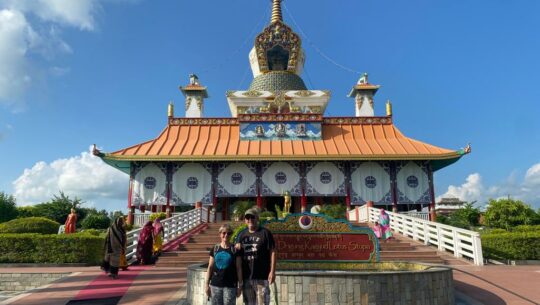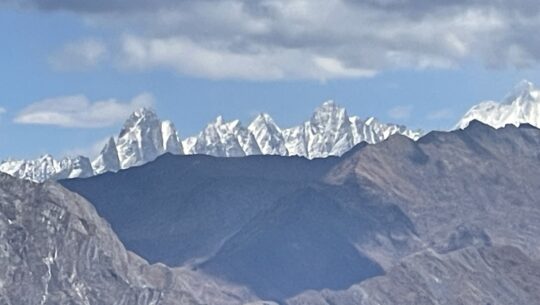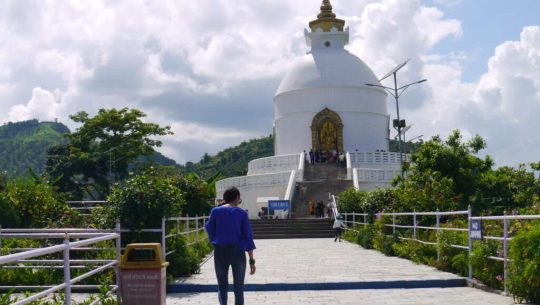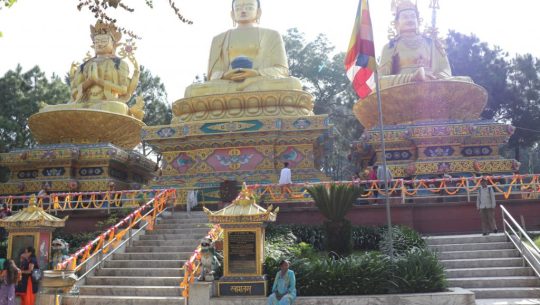The “Meaning of Kamasutra Art” explores the profound cultural and historical significance behind the ancient Indian text known as the Kamasutra. This art form delves into the intricate illustrations and philosophies that depict human relationships, love, and intimacy. Understanding Kamasutra art offers a window into the rich heritage and aesthetic expressions of ancient India, revealing the complexities and beauty of human connections and the societal values of the time.
The Kamasutra is thought to have originated in the Indian state between the fourth and sixth centuries CE. The text is thought to have been compiled by Vatsyayana using previous research on human sexual behavior and relationships. The Kamasutra, which is written in Sanskrit, is one of the most significant works of Sanskrit literature. It has been translated into several languages and has influenced relationships and sexual behavior in several different cultures all over the world.
The Kamasutra is best known for its descriptions of sexual positions and techniques, but it also talks about a lot of other things that have to do with sexual behavior and relationships between people. These include the significance of mutual respect and pleasure, the role of the third person, the divine, the role of the woman and the man in a sexual relationship, and the influence that society has on sexual behavior. The Kamasutra is still widely read and studied today because it is regarded as a comprehensive guide to human sexual behavior and relationships.
Kamasutra History
Kamasutra is much more than just a guide to sexuality, it is important to remember that it was the first erotic text. Kama Deva is the god of love and desire, and the word kama means desire. Written in Sanskrit in the fourth century, the Kama Sutra is a Hindu text. According to Ruth Vanita, Ph., a professor of South and Southeast Asian studies at the University of Montana, “It is the first erotic treatise in the world.” There are several chapters in the Kamasutra. Stone Scripted Kamasutra Art It offers guidance to individuals on how to appreciate life’s pleasures, including sex. Vanita says that the book also says that 64 different kinds of art, like cooking, making music, and even flower arrangements, can give people pleasure outside of the bedroom. Here, a few commander positions are mentioned.
The tundal of temples in the Kathmandu Valley contains a large number of sexual figures. In some temples, sexual figures are depicted not only in tundals but also in metal and stone sculptures. One of the sculptures at Shankhamool Ghat shows male genitalia and similar idols can be found at Tripureeshwar Ghat as well.
Many people may be perplexed as to the reason these ancient temples engaged in sexual activity. However, not all temples in Nepal have sexual figures engraved on them. The majority of the temples are in the Bhaktapur Durbar area, as well as the Vishwanath Temple in Hanuman Dhoka, Charannarayan in Lalitpur, Kirtipur, and Vishwanath Temple.
Strong wood called “Tundal” is typically used to support the temple’s 45-degree roof angle. The carving of Kalpavriksha, such as a tree, flower, or other objects, follows architectural guidelines. is carried out on the tundal’s upper surface. The figure of a deity appears in the second section similarly. In the third section, Gandharvas, Yakshas, Kinnars, and individuals who have committed adultery are engraved.
Sexual figures are more prevalent in the tundals of temples built between the 13th and 14th centuries, according to Sanskrit scholar Dr. Diliraj Sharma. Tundal used to only produce god and goddess-like figures of men and women. That is to say, no temple constructed during the Lichchavi era has such a figure. Sexual figures are said to have only been carved into the temple in the 13th century when tantra-mantra became more popular in society.
Tundal Kamasutra
The Kamasutra is an ancient Indian text attributed to Vatsyayana, believed to have been written around the 3rd century CE. It is a comprehensive work that addresses various aspects of human life, including relationships, love, and sexual behavior. The text provides guidance on human sexual behavior, relationships, and social norms, and it covers a wide range of topics beyond just sexual positions.
The Kamasutra has had a significant influence on art, literature, and culture throughout history, not only in India but also in various parts of the world. It has inspired artistic depictions, sculptures, and other creative expressions that explore themes of human intimacy and relationships.
However, the specific connection you mentioned between the Kamasutra and “Tundal” is not something I can confirm based on the information you provided. If there is a specific cultural or regional context you’re referring to, it would be helpful to have more accurate information to provide a more detailed explanation.
In general, the Kamasutra’s influence on art and culture can be attributed to its exploration of human relationships, emotions, and intimacy, which are universal themes that resonate with people across different societies and periods. If you have more accurate information or questions related to the Kamasutra or its influence, feel free to ask.
Reason behind Tundal Kamasutra
The reasons behind the erotic carvings, such as those found in the Tundal temple, are a subject of speculation and debate among experts. While there isn’t a single definitive answer, several perspectives have been suggested to explain the presence of these carvings:
Religious Symbolism and Sex Education
In Hinduism, sex is considered an important aspect of human life. The carvings could be interpreted as a form of sex education, teaching individuals about the physical and emotional aspects of human relationships. Hinduism acknowledges the significance of sexual desires and includes the path of “kama” (desire or pleasure) as one of the four paths to spiritual realization. The carvings might have served as a reminder of this aspect of human existence.
Divergence from Buddhism
During the period when Buddhism was gaining popularity and influencing Hinduism, there might have been an effort to differentiate the two religions. Buddhism often promoted celibacy and renunciation, which could have led Hindu leaders to emphasize the more worldly and inclusive aspects of their faith, including sexual desires and relationships.
Population Growth and Workforce
Some theories suggest that the carvings were a way to encourage sexual activity and procreation, which was important for sustaining and expanding the population. As societies became more focused on work and productivity, these carvings might have been a reminder of the importance of fulfilling familial and reproductive duties.
Symbol of Luxury and Opulence
The erotic carvings could have been a demonstration of the wealth and luxury enjoyed by ancient Hindu kings. These carvings could have been a display of the king’s power and influence, showcasing their ability to commission such intricate and detailed artwork.
Temple Security and Warding Off Evil Spirits
Art on Jagannath TempleThere is a belief that erotic carvings serve a protective function. It is suggested that the explicit nature of the carvings would discourage people from approaching the temples, thus safeguarding them from potential destruction during times of religious conflict or political upheaval. Additionally, some might have believed that these sculptures would ward off evil spirits.
Sex Education and Communication: In ancient times, sexual education might not have been readily available, and the carvings could have been a way to convey information about human anatomy and sexual practices. These sculptures might have acted as visual aids for educating individuals about these topics.
Symbolic Meanings and Rituals: The carvings could have held symbolic meanings within the context of temple rituals and practices. They might have represented various aspects of life, including fertility, sensuality, and the interconnectedness of human experiences.
It’s important to note that these are speculative explanations, and the true intentions behind the creation of these carvings might have been influenced by a combination of factors. The exact motivations of the artisans and patrons who commissioned these carvings might never be fully known, leaving room for interpretation and discussion among historians, archaeologists, and scholars.
Exploring the Profound Influence of Kamasutra: A Cultural Odyssey
Kamasutra, a timeless masterpiece often misunderstood as a mere guide to physical intimacy, transcends its reputation. The term is derived from the Sanskrit words “kama” (desire) and “sutra” (thread), symbolizing the interweaving of desires and wisdom. Contrary to popular belief, Kamasutra encompasses a wide array of human experiences, embracing ethics, relationships, and aesthetics.
The Essence of Kama Sutra: Delving into Holistic Living
Going beyond the sensual, the Kama Sutra, attributed to Vatsyayana, encapsulates the philosophy of love, pleasure, and the art of nurturing relationships. Its teachings resonate profoundly with those seeking to understand Nepal’s cultural intricacies and interpersonal dynamics, which shape the vibrant society of the region.
Kamasutra’s Harmony with Hinduism: A Spiritual Insight
Within Hinduism, Kamasutra finds its roots in the concept of “kama,” one of the four purusharthas (life goals). While dharma, artha, and moksha focus on duty, wealth, and liberation, kama celebrates the pursuit of desires in a balanced and righteous manner. This alignment highlights the holistic approach of Hinduism, emphasizing the harmonization of the physical and spiritual dimensions of life.
Embodied in the Vatsyayana 64 Arts: Nepal’s Cultural Tapestry
Nepal’s cultural identity is interwoven with the Vatsyayana 64 arts, a compilation of skills mentioned in the Kamasutra. These arts encompass a spectrum of talents, from dance and music to culinary prowess and social etiquette. As you traverse Nepal’s landscapes, you’ll witness the echoes of these arts in daily life and festive celebrations.
Embracing Karma and Desire: The Essence of Karmasutra
The term “Karmasutra” emerges as a fusion of “karma” (actions) and “kama” (desire), emphasizing the inseparable link between intention and action. While karma guides our deeds, karma sutra underscores the importance of performing actions with pure intentions. Engaging with Nepal’s warm locals offers firsthand experience of the profound influence of karma and desire on their way of life.
Kama Sutra: A Mirror to Human Nature
Vatsyayana’s “Kama Sutra: The Standard Work on Human Sexual Behavior” goes beyond its provocative veneer. It serves as a mirror reflecting the intricate layers of human desires, emotions, and relationships. While exploring Nepal’s historical sites, one can discern the subtle impact of the Kama Sutra on the intricate sculptures and artistic expressions adorning these architectural marvels.
Bridging Cultures with Kamasutra’s Meaning in English
In the realm of travel and tourism, comprehending the meaning of Kamasutra in English bridges cultures. As travelers engage with local communities and immerse themselves in Nepal’s traditions, grasping the essence of Kamasutra in a familiar language fosters cross-cultural appreciation and connection.
FAQs
What is Kamasutra’s core message? Kamasutra advocates a holistic life approach, emphasizing the harmonious pursuit of desires within ethical boundaries.
Is Kamasutra solely about sexual positions? No, Kamasutra is a comprehensive guide encompassing diverse facets of human existence, including love, aesthetics, ethics, and relationships.
How does Kamasutra relate to Hinduism? Kamasutra aligns with Hinduism’s concept of “kama,” celebrating ethical desire as a balanced life goal.
What are the Vatsyayana 64 arts? The Vatsyayana 64 arts comprise skills mentioned in Kamasutra, enriching Nepal’s cultural diversity.
How does Kamasutra influence Nepal’s culture? Kamasutra’s teachings intertwine with Nepal’s art, celebrations, and interactions, adding depth to its cultural fabric.
Is Kamasutra relevant today? Yes, Kamasutra’s insights on love, ethics, and harmonious living continue to resonate, offering understanding of human nature.
Conclusion: Kamasutra’s Tapestry of Desires and Culture
As you embark on a journey through Nepal’s landscapes and communities, Kamasutra unveils itself as a thread weaving desires, relationships, and cultural expressions. Beyond misconceptions, Kamasutra embodies profound wisdom shaping Hinduism and Nepal’s diverse heritage.
Discovering Kathmandu’s Charms with Robinson Crusoe Holidays
Embark on a remarkable day tour by Robinson Crusoe Holidays to unravel Kathmandu’s captivating essence. This journey promises a deep dive into the city’s cultural riches, coupled with an encounter with timeless Kamasutra art. Here, an enticing itinerary awaits, capturing the spirit of this unforgettable experience.
Itinerary: A Day of Cultural Marvels
Morning Odyssey: Embracing Kathmandu’s Dawn
As the sun ascends gracefully over Kathmandu, your day of cultural immersion begins. The hospitable team at Robinson Crusoe Holidays welcomes you, setting the stage for an extraordinary adventure. This expedition leads you through Nepal’s bustling capital, where antiquity harmonizes with modernity.
Unveiling Kamasutra Art: Sensuality and Aesthetics
The artistic narrative of Kamasutra unfolds in Nepal, where wood and stone bear sensual poses. Temples within the valley proudly showcase alluring depictions, offering a captivating glimpse into the region’s rich heritage.
Discovering Kamasutra Architectures: A Historical Journey
These intricate designs shine within the revered Durbar Squares, such as Jagannath Temple, Char Narayan Temple, and Pashupatinath Temple. These temples not only display stunning architectural details but also portray Kama Sutra’s intimate illustrations, providing insights into historical perceptions of sensuality.
Hanumandhoka Palace with Kamasutra Art: Jagannath Temple
This temple, adorned with erotic carvings on its roof struts, stands as the oldest structure in Durbar Sq. Although Pratap Malla claimed its construction, it might date back to 1563 during Mahendra Malla’s reign. The temple’s three-tiered platform and two stories hold significance, and its artistry likely served as entertainment for royalty in an era predating modern media.
Journey into Spiritual Tranquility: Swayambhunath Stupa
Your expedition’s initial stop is the iconic Swayambhunath Stupa, the Monkey Temple. Here, playful monkeys coexist with spiritual serenity. This ancient haven offers panoramic city vistas, enveloping visitors in a tranquil cocoon. As you explore, observe local rituals and immerse in the serene atmosphere.
Boudhanath Stupa: Epitome of Architectural Grandeur
Continuing your voyage, you reach Boudhanath Stupa, a Buddhist marvel. Amidst the stupa’s grandeur,
Nepal Tour with Meaning of Kamasutra Art







